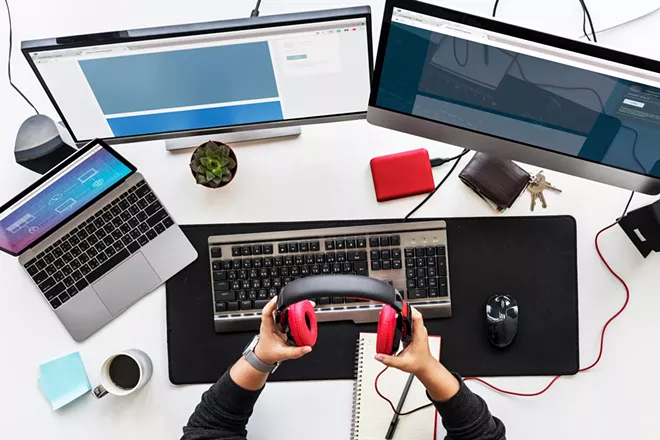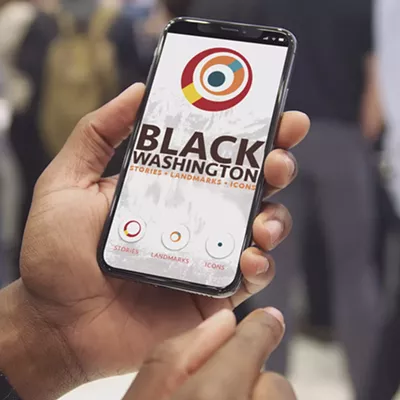My digital workspace used to be limited to a 13-inch laptop screen. It was cramped and maybe bad for posture, but investing in a second screen felt like admitting to a sort of failure — accepting that the computer plays a significant role in my life. When I pictured multi-monitor setups, they generally belonged to people who spend 12-plus hours a day playing MMORPGs or, worse, trading stocks.
But the pandemic dragged on, and the tiny laptop screen started to feel more like a prison. I admitted defeat and bought a (surprisingly cheap!) computer monitor on Craigslist. It was an instant game-changer. I suddenly had more than double the screen I had before. Thousands and thousands of pixels. I could have my Zoom lecture open on one screen, while doing homework for a different class and checking Twitter on another. I felt like Neo hacking into the Matrix. It was awesome. The second monitor made me feel twice as productive so, naturally, I bought a third.
Switching between tabs on a single screen takes just a few milliseconds, but it's more than enough to derail a train of thought. Multiple monitors solve this by having all the tabs spread in front of you simultaneously. To switch between them, you just have to turn your eyeballs a few millimeters to the right or left. It's like having a messy stack of papers strewn across your desk; even if you aren't actively reading them, a part of your brain is still thinking about it.
In 1588, Agostino Ramelli invented the bookwheel, a rotating bookcase-like contraption that allowed scholars to quickly switch between multiple, open books. Today, Windows 10 can run up to 14 monitors from a single device. Virtual reality takes it even further. Technologist Paul Tomlinson has a good essay on Medium about his virtual reality workspace, which can simulate dozens of displays the size of an IMAX screen. Spending eight hours a day strapped to VR goggles sounds dystopian, but all those screens must make you so much more productive. Right?
My current three-monitor setup allows for a shocking number of things to happen at the same time. To my right: Slack, email and calendar. To the left: a word document, notes app and interview transcripts. Below that: more notes, documents, webpages and miscellaneous tabs.
It's a neat setup, but in recent weeks I've started to question what those extra monitors are really doing. I'm obviously not three times more productive, even if I'd like to feel like I am. Yes, the extra screens make it easier to quickly access information, but at what cost? Switching between tabs is a distraction, but so is having them all in your face at the same time.
The fallacy at the heart of the digital age is that more access to information is fundamentally good. More text, more pixels, more scroll, more notifications, more knowledge — it's all supposed to build toward something. But what?
I wrote a lot of this piece while backpacking in the Cascades. When I turn to the left there's no additional screen with pages of notes and reference documents, just a frozen lake and snow-capped mountains. It's not necessarily better, but it's not worse either. I'm starting to think that the rush to fine-tune attention and maximize productivity might be an unwinnable battle. An increasing amount of labor involves writing words on a computer. You can choose to do it on one screen or 20, but at the end of the day it probably doesn't matter. The human capacity for distraction will always win. ♦
























